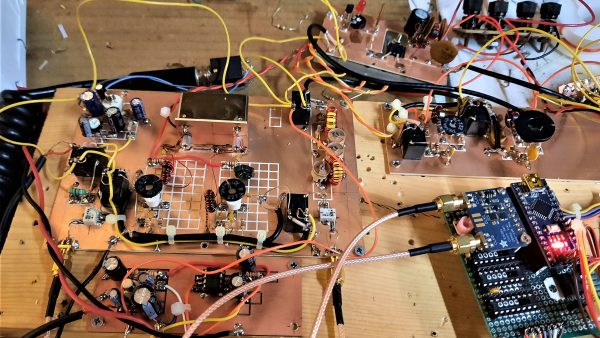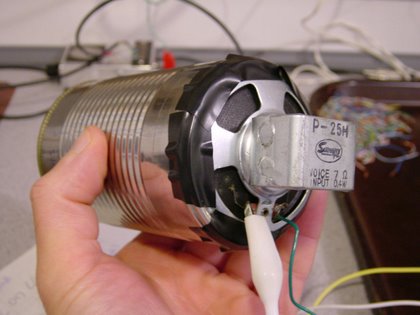[David], DL1DN, is an Amateur Radio enthusiast with a penchant for low-power (QRP) portable operations. Recently he was out and about, and found that 10 m propagation was wide open. Not discouraged by having forgotten his antenna, he kludges up a makeshift one using a 20 cm length of aluminum foil (see video demonstration below the break). [David] wasn’t completely unprepared, as he did have the loading coil for his portable 20 m antenna, but was missing the telescoping whip. He calculated the whip length should be around 20 cm for 10 m operation, and crinkles up a sheet of foil the approximate length. He tunes it to length by rolling the tip to shorten the “whip” until he gets an SWR minimum.

What are some unusual items you’ve used as makeshift antennas? Let us know in the comments below. Thanks to [mister35mm] for submitting this to our tip line.
Continue reading “Aluminum Foil 20 Cm Antenna For 10 M Operation”













